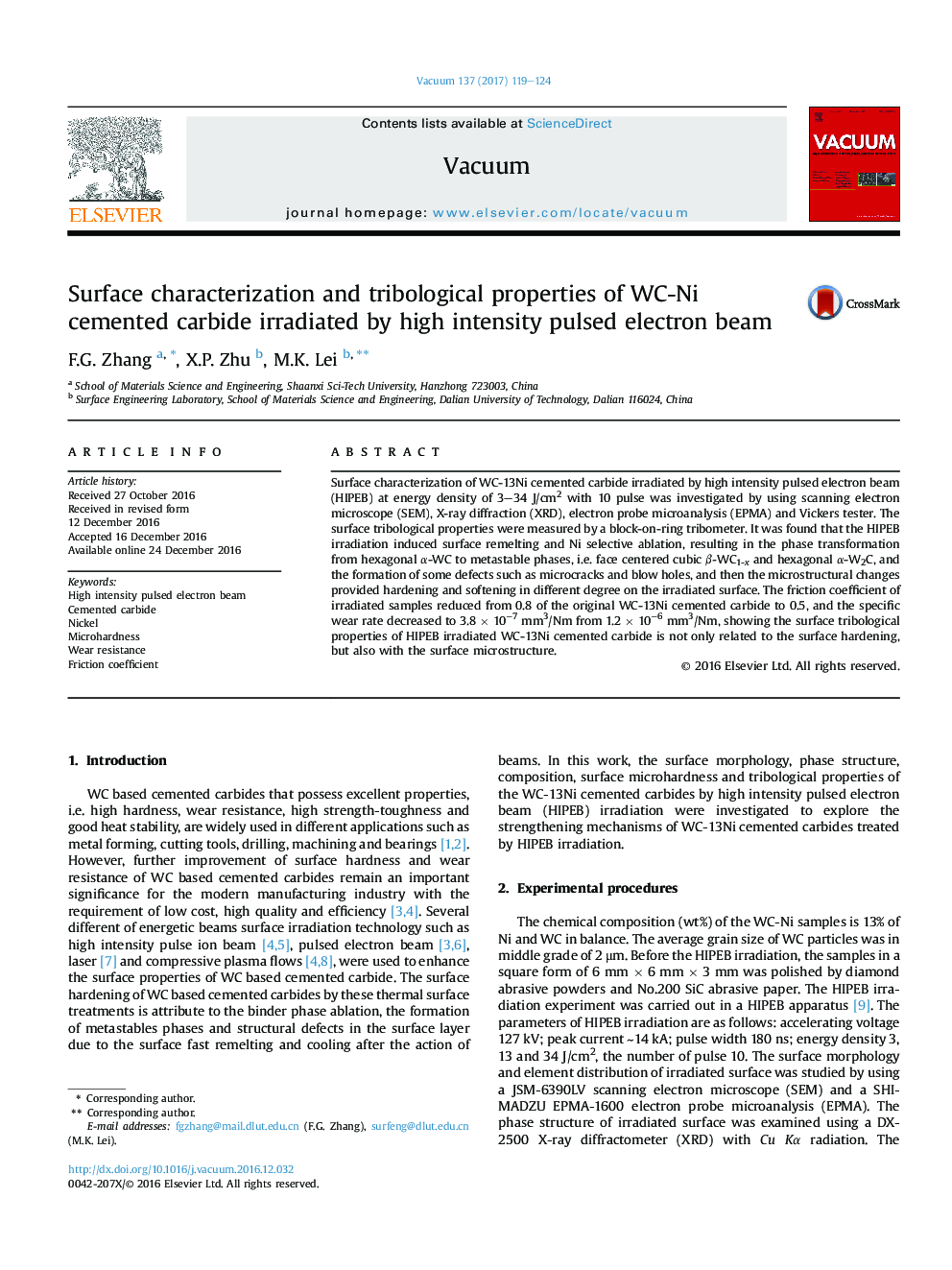| Article ID | Journal | Published Year | Pages | File Type |
|---|---|---|---|---|
| 5468276 | Vacuum | 2017 | 6 Pages |
Abstract
Surface characterization of WC-13Ni cemented carbide irradiated by high intensity pulsed electron beam (HIPEB) at energy density of 3-34 J/cm2 with 10 pulse was investigated by using scanning electron microscope (SEM), X-ray diffraction (XRD), electron probe microanalysis (EPMA) and Vickers tester. The surface tribological properties were measured by a block-on-ring tribometer. It was found that the HIPEB irradiation induced surface remelting and Ni selective ablation, resulting in the phase transformation from hexagonal α-WC to metastable phases, i.e. face centered cubic β-WC1-x and hexagonal α-W2C, and the formation of some defects such as microcracks and blow holes, and then the microstructural changes provided hardening and softening in different degree on the irradiated surface. The friction coefficient of irradiated samples reduced from 0.8 of the original WC-13Ni cemented carbide to 0.5, and the specific wear rate decreased to 3.8 Ã 10â7 mm3/Nm from 1.2 Ã 10â6 mm3/Nm, showing the surface tribological properties of HIPEB irradiated WC-13Ni cemented carbide is not only related to the surface hardening, but also with the surface microstructure.
Related Topics
Physical Sciences and Engineering
Materials Science
Surfaces, Coatings and Films
Authors
F.G. Zhang, X.P. Zhu, M.K. Lei,
